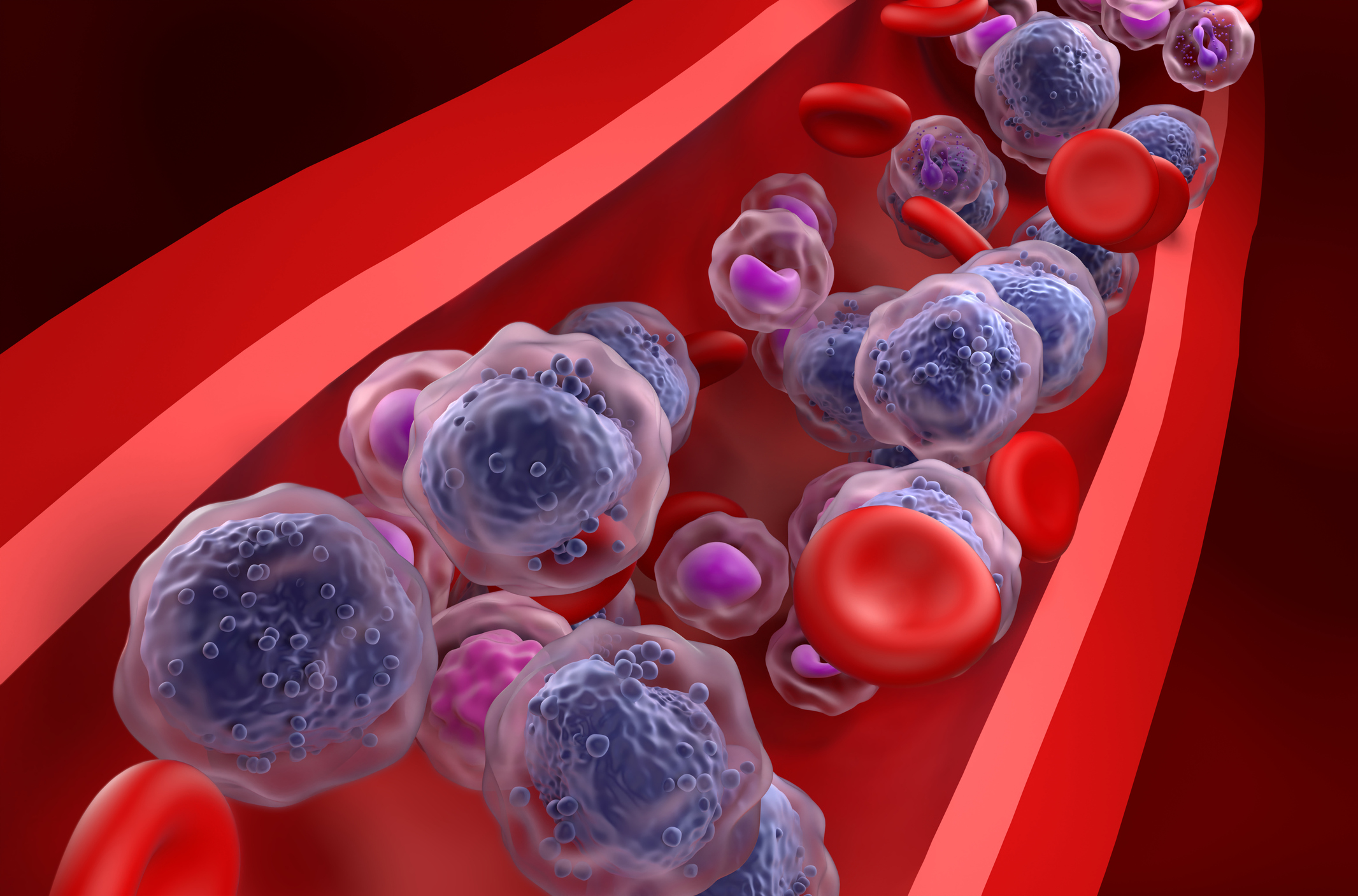
In science, it is to be expected that established ideas and practices will be subject to scrutiny and revision over time. The same holds true in hematologic oncology, where questions arise and persist until the next breakthrough comes along to answer them.
For myelodysplastic neoplasms (or syndromes—whichever side you fall on) that time has seemingly arrived. In 2022, the World Health Organization (WHO) released the fifth edition of its updated classifications for myeloid neoplasms,1 changing the label from “myelodysplastic syndromes” to “myelodysplastic neoplasms” but retaining the MDS acronym. Beyond the name change, the fifth edition’s updates include grouping MDS into three families.
Within months, a group independent of the WHO published the International Consensus Classification (ICC) of Myeloid Neoplasms and Acute Leukemias,2 which includes its own new terminology for MDS/acute myeloid leukemia (AML).
The field of hematologic oncology is now contending with reconciling the proposed rival WHO and ICC systems. Joseph Khoury, MD, the lead author of the WHO paper and the Stokes-Shackleford Professor and Chair in the Department of Pathology and Microbiology at the University of Nebraska Medical Center, estimates the two systems overlap by 90%. However, several articles published in the past year have drawn comparisons between the two classifications, indicating uncertainty and a lack of consensus in the field.3-8
“The WHO has been the gold standard for the classification of myeloid neoplasms for about 20 years now,” Dr. Khoury said. “We talk—in my field at least—about standard-setting organizations. These are standards because they are developed through a rigorous process based on published data that’s been optimized over the years.”
However, according to Daniel Arber, MD, lead author of the ICC paper and Professor and Chair of Pathology at the University of Chicago, statements that position the WHO as the be-all and end-all are “ludicrous.”
“There’s a reason why there are two classifications,” he said, adding that some aspects of the WHO MDS classification are incorrect.
“Most of the differences [in the MDS classification] are entities added in the WHO classification that really are not supported by the literature,” Dr. Arber said. “Then some nomenclature changes, which were arbitrarily made.”
For some, it might be hard to decipher whether the conflict is mere academic bickering or if the differences are driven by the natural growing pains that occur when any science evolves.
David Steensma, MD, FACP, formerly the Edward P. Evans Chair in MDS at the Dana-Farber Cancer Institute and now the Global Head of Hematology at Novartis Institutes for BioMedical Research, suggested that it is a little of both, and that such conflict is not unique to myeloid neoplasia or to hematologic malignancies.
“Academics want to make their mark by classifying, reclassifying, and renaming things—when I was in academia, I was guilty of this too,” he told Blood Cancers Today. “Also, as we learn more and make new discoveries in biology, the way we think about disease relationships changes. Some types of pathology become more distinct, while other disease clusters tend to merge. It’s partly driven by discovery, clinical trial results, and revelation of new things about disease.”
Furthermore, next-generation sequencing techniques have led to the increasing identification of somatic mutations in MDS patient samples. This has changed the way experts think about MDS, according to Somedeb Ball, MD, of the H. Lee Moffitt Cancer Center and Research Institute.
“Data were coming in, which necessitated the introduction of genetics into the classification system for MDS, so both the WHO and ICC introduced subgroups based on that,” he said.
Considering the recent changes and the potential confusion of two competing classification systems, several experts are calling for a unified approach to MDS.
“The hematologists—let’s say the users, the people who write discharge letters—are bewildered by two classifications,” said Uwe Platzbecker, MD, a co-author on the WHO fifth edition and the Director of the Clinic and Policlinic for Hematology, Cell Therapy, and Hemostaseology at the Leipzig University Hospital in Germany.
“I think patients are also bewildered. We don’t speak a common language anymore,” Dr. Platzbecker added. “Not within our scientific community, nor with our patients. [Hematologists] make an argument now and create a lot of pressure … to harmonize the classification.”
Not So Different After All?
Amid the disagreements chronicled in trade publications9,10 between certain WHO and ICC individuals, it might be easy to overlook the fact that both classifications share more similarities than differences.
“I think the ICC is as data-driven as the WHO classification,” Dr. Platzbecker said. “The systems basically overlap in the majority of cases.”
Nevertheless, he continued, “there are some differences with regard to small subgroups. For instance, the TP53-mutated patients are a distinct entity in the WHO only if there are biallelic alterations or inactivation of two TP53 genes. Whereas in the ICC, TP53-mutation status is associated with a dismal outcome or is its own entity mostly irrespective of the blast count, with some exceptions with less than 10% bone marrow blast.”
Other notable differences are the new WHO categories, hypoplastic MDS and MDS with fibrosis, which Dr. Platzbacker said are justified because of the therapeutic implications.
The differences illustrate how data can be interpreted in multiple ways, which might indicate that more thought should be given to how to assess and define some of these patient subgroups, Dr. Platzbecker said.
Robert Hasserjian, MD, Director of the Hematopathology Fellowship Program at Massachusetts General Hospital and a Professor of Pathology at Harvard Medical School, who is the lead author of the ICC MDS section, concurred that differences might arise from varying interpretations of data.
“Creating a classification is a scientific process,” Dr. Hasserjian said. “There was very little overlap in authorship, and I think the good news is that [both the ICC and WHO] had similar changes. It’s expected that two trials or two studies that look at a relatively similar group of patients might sometimes yield different results.”
What if a patient receives two diagnoses: AML in one classification and MDS in the other?
“Obviously it might be confusing and upsetting, but it indicates that the patient’s disease is controversial, and maybe [it’s] unclear how to treat,” Dr. Hasserjian said. “It also indicates that this is a disease that needs further study, which I don’t think is a bad thing.”
Dr. Hasserjian also clarified for Blood Cancers Today that the ICC was never meant to undermine the WHO. Rather, the ICC authors had concerns about the WHO’s process for the fifth edition, which he said differed from the process used for earlier WHO editions, including the MDS section in the revised fourth edition that he led with other senior advisors, Dr. Arber among them.
Head-to-Head
But back to those differences between the WHO and ICC. What do they really mean in the world of managing and treating patients?
“There are some subtle differences, and some of those differences are clinically relevant,” Dr. Ball said.
Dr. Ball, who is not listed as an author on either the WHO or ICC papers, led a study3 that was presented at the 64th American Society of Hematology (ASH) Annual Meeting and Exposition that took an unbiased look at how the discrepancies between the two systems might affect the diagnosis and management of MDS.
He said his research team sought to determine which “classification subgroups in both the WHO and ICC prognostically made sense,” explaining that the two classifications have caused some confusion in clinical decision-making as well as in diagnosis by hematopathologists.
“The sole purpose of finding out which of these classification subgroups are prognostically relevant is to fine tune how we are going to classify and thereby manage patients,” Dr. Ball said.
The study validated the two genetic subgroups common to both classifications: MDS with the SF3B1 mutation and MDS with the TP53 mutation. However, there are some differences in how these subgroups are defined in the two classifications. For example, the WHO’s subgroup of MDS with mutated TP53 requires biallelic TP53 loss. The ICC, in contrast, defines two categories of TP53-mutated MDS, one for blast counts below 10% and a second, controversially labeled MDS/AML, for blast counts of 10% to 19%, which requires only one TP53 mutation.
The study’s authors concluded the “molecularly defined entities (SF3B1, del (5q), and bi-TP53) are clearly unique.”
According to Dr. Ball, clinicians should consider genetic factors when treating patients with MDS, tailoring therapies to specific alterations. “For patients with the del (5q), we know they historically respond well to lenalidomide, so it’s important to identify the subgroup and important to realize that it has to be isolated del (5q) and not with other co-existing cytogenetic abnormalities like complex karyotype,” he said. Furthermore, patients with SF3B1 mutations may benefit from luspatercept, while those with TP53 mutations may require specialized care or inclusion in clinical trials.
For other categories, such as the WHO’s category of MDS with ring sideroblasts without the SF3B1 mutation, the researchers did not find any difference in leukemia-free survival (LFS) and overall survival (OS) between MDS with ring sideroblasts, wild-type SF3B1, and MDS with low blasts, demonstrating that both subgroups behave the same.
Another WHO category, MDS with fibrosis, had worse LFS and OS compared with MDS with increased blasts (MDS-IB1 and MDS-IB2 combined).
Regarding the blast cutoff, the ICC criteria introduce a new entity called MDS/AML for patients with 10%-19% blasts, while the WHO criteria use the same cutoffs as in previous classifications.
Dr. Ball and colleagues found that MDS-IB1 (5%-9%) had a worse LFS and OS than MDS with low blasts. The results also showed that the OS was similar between IB1 and IB2, although the IB2 group had significantly worse LFS.
“Based on our data, both proposed classifications need to be refined,” Dr. Ball and colleagues wrote.
The MDS/AML Continuum
A different study from 2022 comparing both classifications also showed that while the basic concepts underlying the WHO and ICC systems are similar, there is a subset of patients who will receive a “noncomparable diagnosis.”6
Those researchers reported “a small number of patients (approximately 1%) will be differently classified as AML or MDS based on the phrasing of the definitions,” attributing that to the new MDS/AML ICC category.
In the ICC’s criteria, MDS-EB2—the previous category in the WHO classification for adults with 10% or more blasts—was changed to MDS/AML. The group wrote that it was “to acknowledge the biologic continuum between MDS and AML.”
“There are several divergences in the ICC and WHO criteria,” Dr. Hasserjian said. “But I think the number of patients who get very different diagnoses is actually very small. I would say probably less than 10%. Again, if you discount differences in names.”
Dr. Hasserjian conceded that the ICC’s MDS/AML terminology is “controversial.” Nonetheless, he said the category was supported by evidence.11
“The evidence for this was partly driven by some studies done at [the] University of Washington in Seattle12 and others in Europe13 as well, and some of the European cooperative groups, showing that patients who had 10% to 19% blasts could be treated successfully with AML-type regimens,” he explained.
Dr. Hasserjian emphasized the ICC threshold to define AML was not dropped to 10% blasts. The threshold for AML remains at 20% blasts, except for certain genetic cases in which an AML diagnosis can be made with less than 20% blasts, such as when there is an NPM1 mutation, which is recognized by both the ICC and WHO systems, although the ICC requires at least 10% blasts in this setting and the proposed WHO classification has no blast cutoff.
As to why the WHO did not adopt the ICC terminology, Dr. Khoury said that after considering the new category, the WHO did not believe there were data to support the adoption of the MDS/AML terminology.
For Dr. Khoury, the application of the AML term to describe patients who are on the lower end of the spectrum in terms of blast count creates a lot of issues.
“One issue could be confusion for third-party payers,” Dr. Khoury said. “Another issue [is] the potential for overtreating MDS patients who may have, say, 11% or 12% blasts.”
According to Dr. Khoury, these issues can “pose a significant risk for some patients.”
For example, if a patient is treated with intensive chemotherapy when their blast count is below 20%, it could be harmful, or if approval for treatment coverage is delayed, it could cause significant inconvenience, Dr. Khoury explained.
Dr. Arber countered that similar concerns could be made about the proposed WHO fifth edition now classifying other case types with low blasts as AML that have been MDS in the past.
“The WHO appears to now classify most cases with recurring cytogenetic abnormalities as AML without regard to blast cell count,” Dr. Arber said “This will move patients previously with a diagnosis of MDS to AML even when the blast count is not increased. This applies to patients with a wide range of genetic abnormalities, including NPM1 mutations and inversion [of chromosome] 3. Because of limited data on these genetic groups, the ICC requires at least 10% blasts before a case can be called AML.”
Dr. Khoury also said that the WHO revised fourth edition had already established how patients with MDS with excess blasts can be managed. He said the revised fourth edition clearly stated that these patients could be enrolled in AML-type trials if the principal investigator and the regulatory agencies deemed it appropriate.
“The authors and editors of the fifth edition felt that this represents a more judicious approach given the lack of evidence supporting a different stance,” he said.
Dr. Khoury continued, “If the treating physician feels that a patient is at 18% blasts, for example, and would benefit from AML therapy, then they can use the diagnosis of MDS with increased blasts as a basis for giving AML-type therapy. We felt that we landed on a balanced position that did not create undue confusion or unintended consequences.”
Dr. Steensma also expressed concern about the MDS/AML category put forth by the ICC, stating that it will be a challenging shift, particularly in the United States, where insurers require one diagnosis to link to specific tests and medicines that are covered.
He highlighted the existing issue of overlap between myelodysplastic and myeloproliferative neoplasia, stating that the proposed changes could pose similar challenges.
“We already have myelodysplastic-myeloproliferative overlap neoplasia,” Dr. Steensma said. “That causes no end of confusion in billing and coding and the medical record. I think the ICC may represent more of a European perspective, where that’s not so much of an issue, and ‘MDS/AML’ probably didn’t raise concerns for hematopathologists who don’t prescribe medications. I worry that it’s going to be a problem in the United States when insurers see terms like ‘MDS/AML’ that don’t match [US Food and Drug Administration] drug approval language, which will give them yet another excuse to delay or reject payment for appropriate care.”
When asked about the WHO’s shift to “neoplasm” and its potential consequences, he said that the ICC’s new MDS/AML category will be the “more challenging name change because of the potential ambiguity.”
A Rose by Any Other Name?
The WHO’s move to change the name of myelodysplastic syndromes to “neoplasms” instead of “syndromes,” while keeping the same acronym (MDS) has conjured a range of emotions for those involved, running the gamut from enthusiasm to resignation.
However, according to Dr. Khoury, a clear majority of editors and authors favored the name change in a vote during one of the WHO workgroup meetings.
“The core argument is that we recognize these diseases as a form of cancer,” Dr. Khoury said. “They are neoplastic. They are, by definition, proliferations of hematopoietic stem cells that are clonal in nature and inherently clonally unstable, resulting in progressive bone marrow failure and increased risk for transformation to AML.”
Does the name change have implications for patients with MDS?
Years ago, according to Rami Komrokji, MD, Head of the Leukemia and MDS Section at Moffitt Cancer Center, patients were denied treatment because MDS was not characterized as cancer. For instance, many insurers did not recognize MDS as cancer, and MDS wasn’t listed as cancer in the cancer registries when those were developed.14
“I think it’s very important for us to recognize that MDS is a neoplastic stem-cell disease whether it’s lower or higher risk,” Dr. Komrokji said. “The rationale is that there is benefit stressing that this is a neoplastic cancer.”
When Blood Cancers Today asked Dr. Hasserjian if he had heard of any patients being denied treatment based on the name alone, he said he had not.
For the ICC, not all clinicians were on board with the name change, which led the ICC to retain the historical name, Dr. Hasserjian explained.
“I certainly don’t have objections to myelodysplastic neoplasms,” Dr. Hasserjian said. “We all agree that MDS is a hematologic neoplasm … it was some of our clinical colleagues who had concerns about confusions in the chart … the way it was written out.”
According to Dr. Hasserjian, during the clinical advisory committee meeting preceding the development of the ICC, a proposal was made to change the name of myelodysplastic syndromes to myelodysplastic neoplasms. However, the suggestion was met with resistance from many clinicians who were concerned about the possible confusion between the abbreviations “MDN” and “MPN” (myeloproliferative neoplasms).
“A large majority of the clinicians participating … opposed this [change],” Dr. Arber said.
Furthermore, the historical use of the term myelodysplastic syndromes was another factor that influenced the decision to keep the name the same. The aim was to distinguish it easily from “myeloproliferative neoplasms.”
As for the retention of the MDS acronym, it is a bit of a linguistic tango on the WHO’s part to avoid potential confusion or fallout from the name change.
“Nevertheless, we usually don’t use the full name, we use the abbreviation, MDS, in the clinical notes,” Dr. Hasserjian said.
It Takes Two to Make a Thing Go Right
For its part, the WHO is already incorporating ICC terminology in its classification as a “goodwill” effort to reconcile the two systems.
“We’re not waiting for the sixth edition,” Dr. Khoury said. “We’re doing it now, by the WHO adopting many of the ICC terms as acceptable terminology within the WHO classification. Each entry has a subsection that says, ‘acceptable terminology’ or ‘not recommended terminology.’ Basically, what we are doing is creating 90% convergence.”
Dr. Khoury also noted the importance of protecting the WHO’s system as the “standard” for classifying all cancers in all organ systems.
“It behooves us to protect the progress that we as a community [have] achieved over the past decades and not to go backwards and undo a lot of advantages that we were benefiting from by having a single classification,” Dr. Khoury said.
He added that efforts will be made to move toward reconciliation to avoid confusion for patients, providers, and researchers.
There is also an international working group that includes representatives from both the WHO and ICC who are publishing international guidelines and producing a web-based calculator to help with using both classifications, Dr. Hasserjian said.
“I think it’s an example of how we can work together and learn each other’s classifications,” he said. “We have to be comfortable with both [classifications] and set aside whichever one we worked on and work together to improve the next classification. I think we should approach it in a very scientific way so that the sixth edition classification will be hopefully unified and informed by these differences.”
Dr. Platzbecker envisions more of a Hallmark-type reconciliation in the future for the WHO and ICC.
“All the people involved in both classifications will hopefully hug each other on a podium at one of the future ASH meetings and swear that they will never do this again,” he said with a smile. “Classifications require broad international solidarity and trust.”
Leah Sherwood is managing editor of Blood Cancers Today. Cecilia Brown helped with the reporting of this story.
References
- Khoury JD, Solary E, Abla O, et al. The 5th edition of the World Health Organization Classification of Haematolymphoid Tumours: Myeloid and Histiocytic/Dendritic Neoplasms. Leukemia. 2022;36(7):1703-1719. doi:10.1038/s41375-022-01613-1
- Arber DA, Orazi A, Hasserjian RP, et al. International Consensus Classification of Myeloid Neoplasms and Acute Leukemias: integrating morphologic, clinical, and genomic data. Blood. 2022;140(11):1200-1228. doi:10.1182/blood.2022015850
- Ball S, Singh A, Ali N, et al. A product of “clash of titans” or true reflection of disease biology? Validation of 2022 WHO and ICC classifications in a large dataset of patients with myelodysplastic syndrome. Blood. 2022;140(Supplement 1):1118-1120. doi:10.1182/blood-2022-170158
- Bruehl FK, Osman MM, Chen D, Dalland JC. The new WHO and ICC classification systems for myelodysplastic syndromes and their impact on the clinical laboratory.
J Hematop. 2023. doi:10.1007/s12308-023-00538-7 - Falini B, Martelli MP. Comparison of the International Consensus and 5th WHO edition classifications of adult myelodysplastic syndromes and acute myeloid leukemia. Am J Hematol. 2023;98(3):481-492. doi:10.1002/ajh.26812
- Huber S, Baer C, Hutter S, et al. AML and MDS classification according to WHO 2022 and International Consensus Classification: do we invent a Babylonian confusion of languages? Blood. 2022;140(Supplement 1):555-556. doi:10.1182/blood-2022-162326
- Huber S, Haferlach T, Müller H, et al. MDS subclassification—do we still have to count blasts? Leukemia. 2023;37(4):942-945. doi:10.1038/s41375-023-01855-7
- Volpe VO, Garcia-Manero G, Komrokji RS. SOHO State of the Art Updates and Next Questions: treatment of lower risk myelodysplastic syndromes. Clin Lymphoma Myeloma Leuk. 2023;23(3):168-177. doi:10.1016/j.clml.2023.01.001
- Lawrence L. Breaking up is hard to do. ASH Clinical News. December 2022. Accessed April 21, 2023. https://ashpublications.org/ashclinicalnews/news/6593/Breaking-Up-Is-Hard-to-Do?searchresult=1
- Titus K. New paths through hematologic neoplasms. CAP TODAY. March 2023. Accessed April 21, 2023. https://www.captodayonline.com/new-paths-through-hematologic-neoplasms/
- Estey E, Hasserjian RP, Döhner H. Distinguishing AML from MDS: a fixed blast percentage may no longer be optimal. Blood. 2022;139(3):323-332. doi:10.1182/blood.2021011304
- Pogosova-Agadjanyan EL, Moseley A, Wood BL, et al. Improved prognostic significance of genomic and transcriptional biomarkers by examining enriched populations of AML blasts: a SWOG report. Blood. 2016;128(22):2890. doi:10.1182/blood.v128.22.2890.2890
- Grob T, Al Hinai ASA, Sanders MA, et al. Molecular characterization of mutant TP53 acute myeloid leukemia and high-risk myelodysplastic syndrome. Blood. 2022;139(15):2347-2354. doi:10.1182/blood.2021014472
- Steensma DP. Are myelodysplastic syndromes “cancer”? Unexpected adverse consequences of linguistic ambiguity. Leuk Res. 2006;30(10):1227-1233. doi:10.1016/j.leukres.2005.12.001






 © 2025 Mashup Media, LLC, a Formedics Property. All Rights Reserved.
© 2025 Mashup Media, LLC, a Formedics Property. All Rights Reserved.